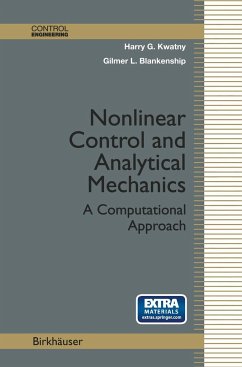During the past decade we have had to confront a series of control design prob lems - involving, primarily, multibody electro-mechanical systems - in which nonlinearity plays an essential role. Fortunately, the geometric theory of non linear control system analysis progressed substantially during the 1980s and 90s, providing crucial conceptual tools that addressed many of our needs. However, as any control systems engineer can attest, issues of modeling, computation, and implementation quickly become the dominant concerns in practice. The prob lems of interest to us present unique challenges because of the need to build and manipulate complex mathematical models for both the plant and controller. As a result, along with colleagues and students, we set out to develop computer algebra tools to facilitate model building, nonlinear control system design, and code generation, the latter for both numerical simulation and real time con an outgrowth of that continuing effort. As trol implementation. This book is a result, the unique features of the book includes an integrated treatment of nonlinear control and analytical mechanics and a set of symbolic computing software tools for modeling and control system design. By simultaneously considering both mechanics and control we achieve a fuller appreciation of the underlying geometric ideas and constructions that are common to both. Control theory has had a fruitful association with analytical mechanics from its birth in the late 19th century.
Hinweis: Dieser Artikel kann nur an eine deutsche Lieferadresse ausgeliefert werden.
Hinweis: Dieser Artikel kann nur an eine deutsche Lieferadresse ausgeliefert werden.
"The book mainly deals with a series of control design problems in electro-mechanical systems using analytical mechanics.... The book builds complex mathematical models for both the plant and the controller.... In my view it is the first book in the market for an engineer with cross-disciplinary experience of computer modeling and information science. The beauty of this book is that it communicates complex problems with a successful language without ambiguity and hence establishes a correct level of mathematical rigour-a cornerstone of the book. Structural engineers with interests in IT, solid modeling, impact loads on structures, joints, kinematics, robotics and movements of overhead cranes will find this book extremely useful.... The authors are to be congratulated for bringing this complex subject into the forefront for engineers with great simplicity." -The Structural Engineer








